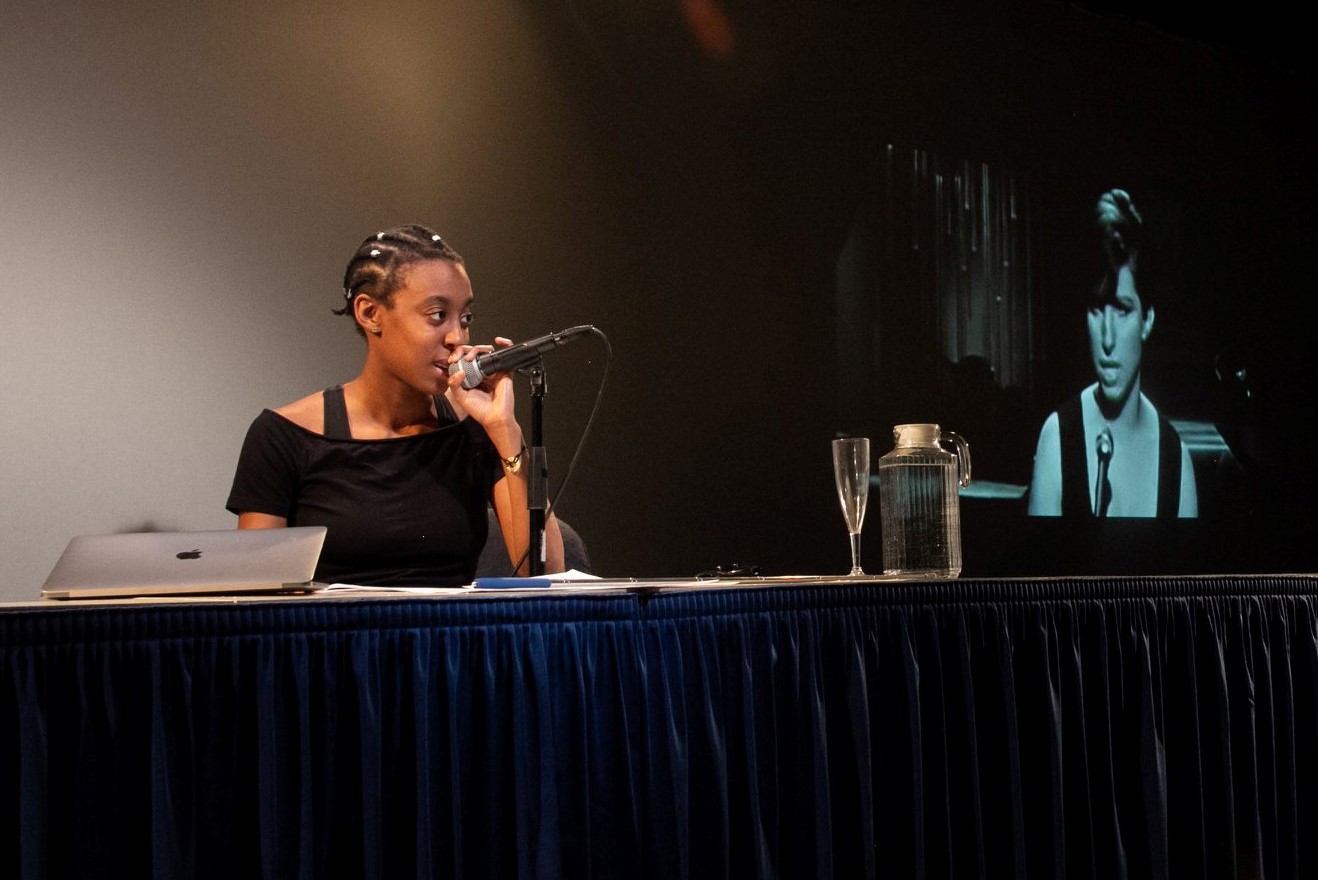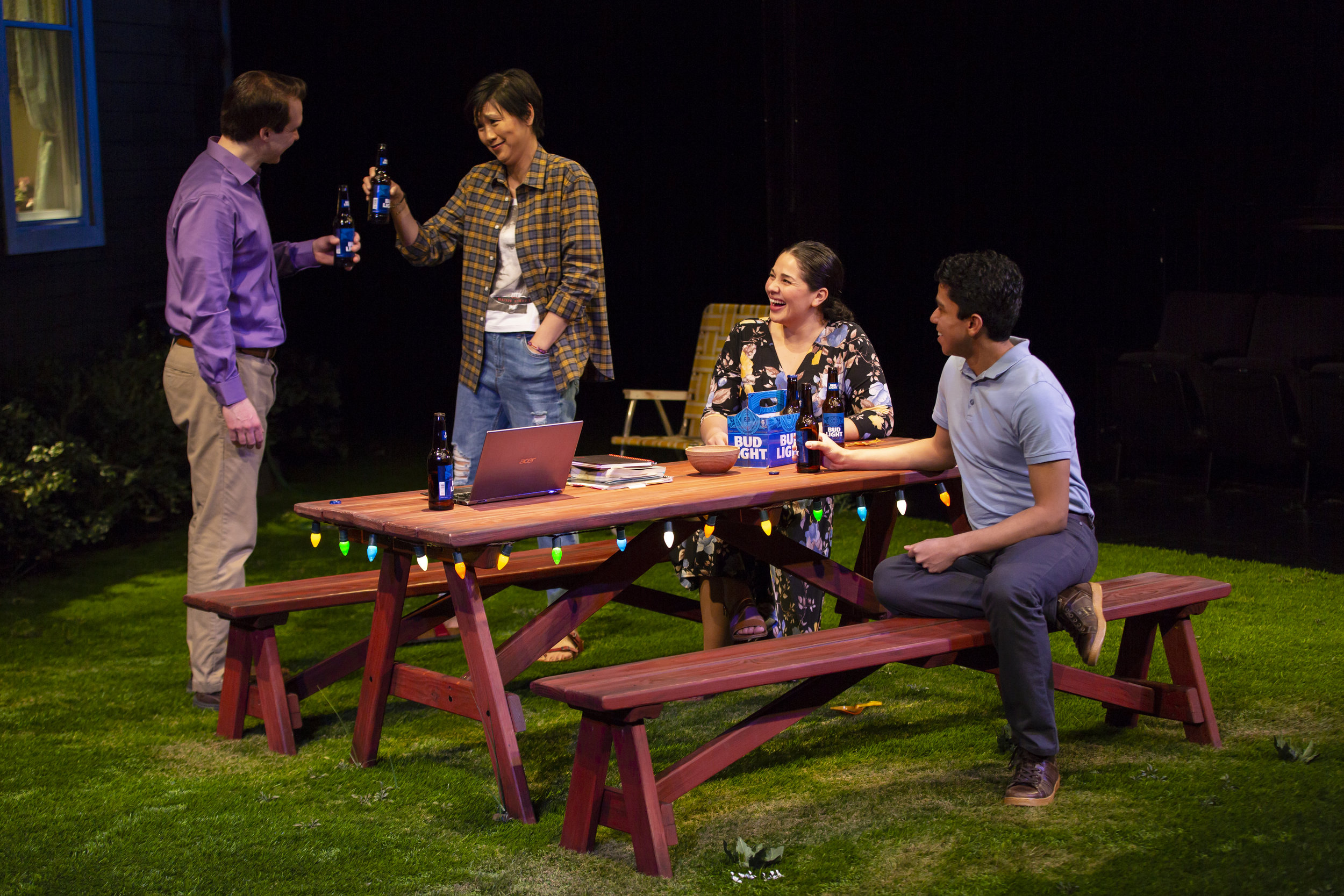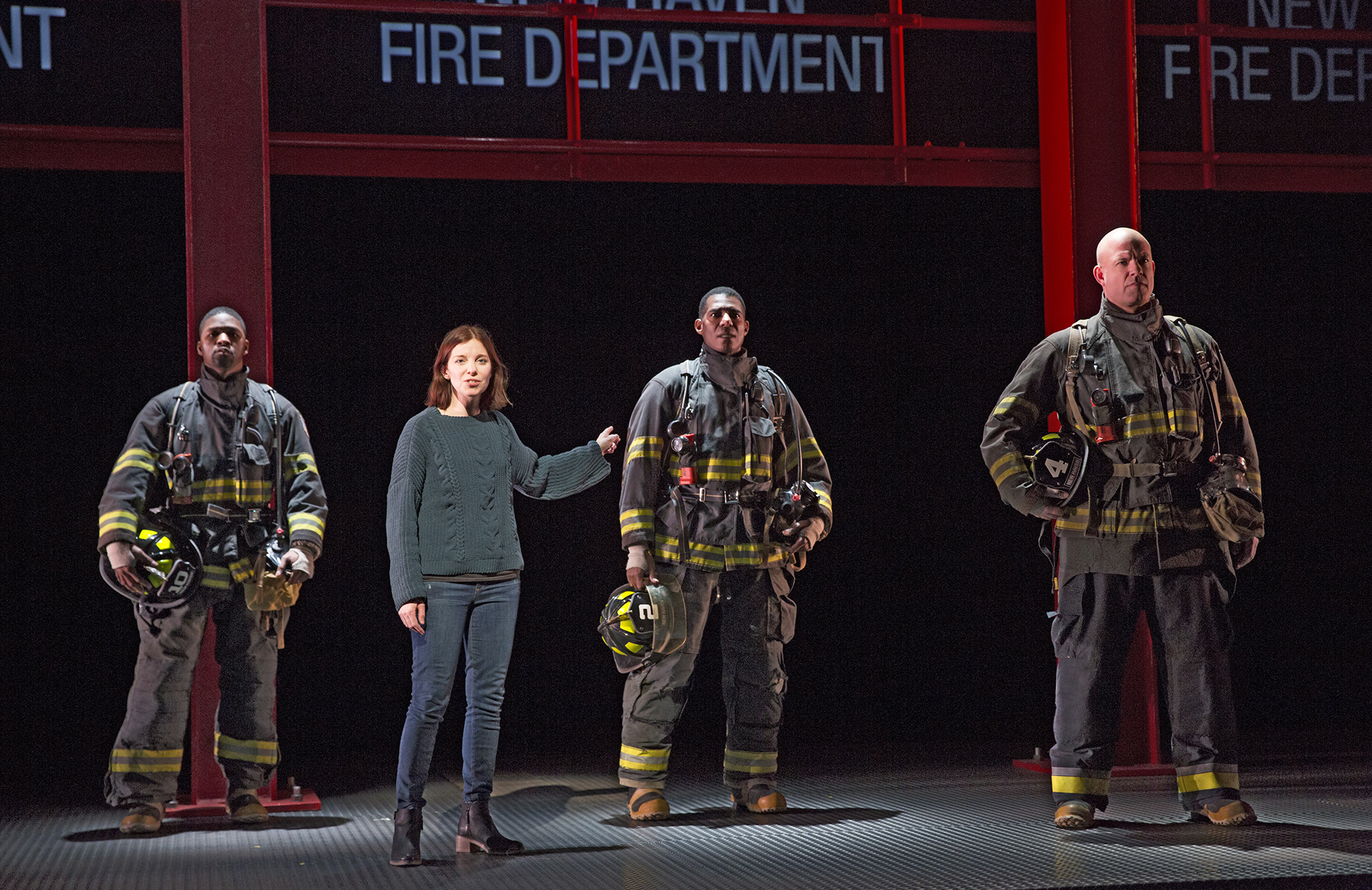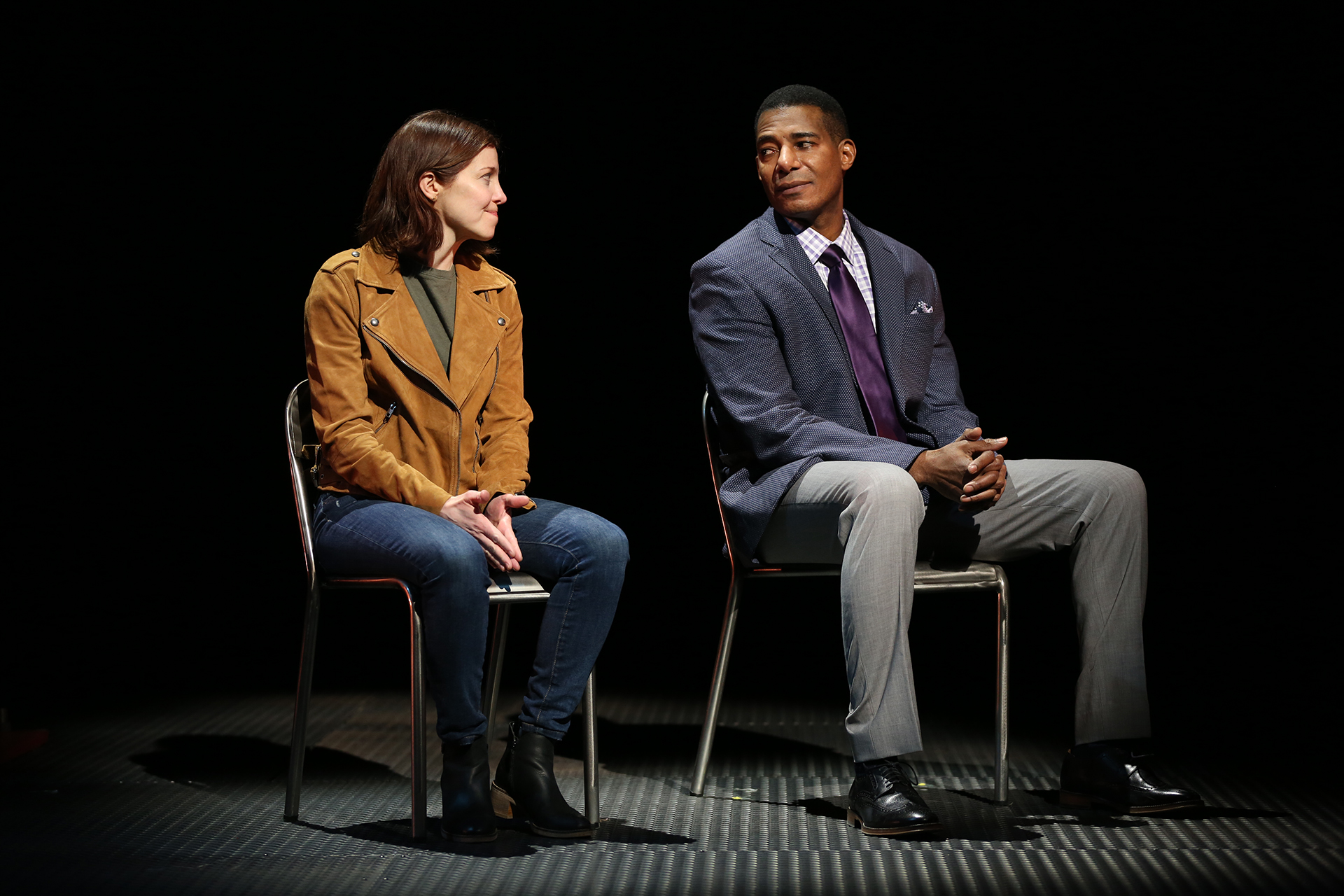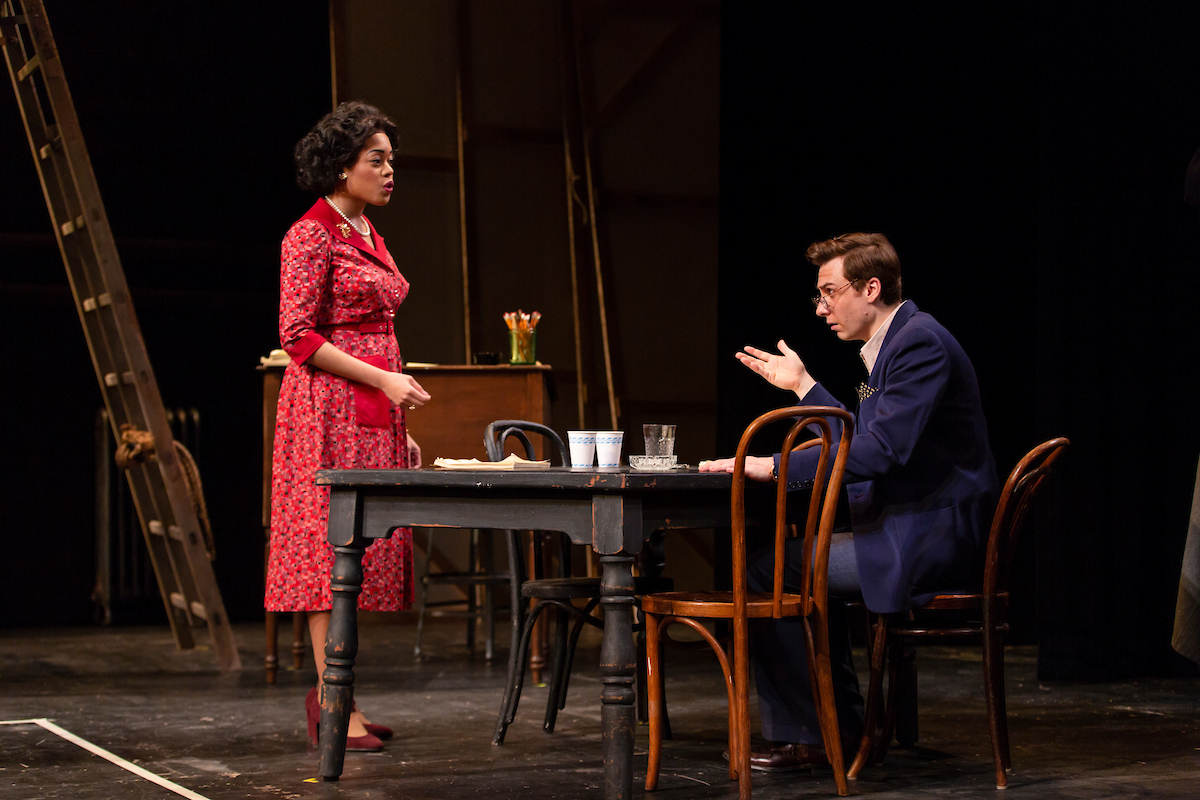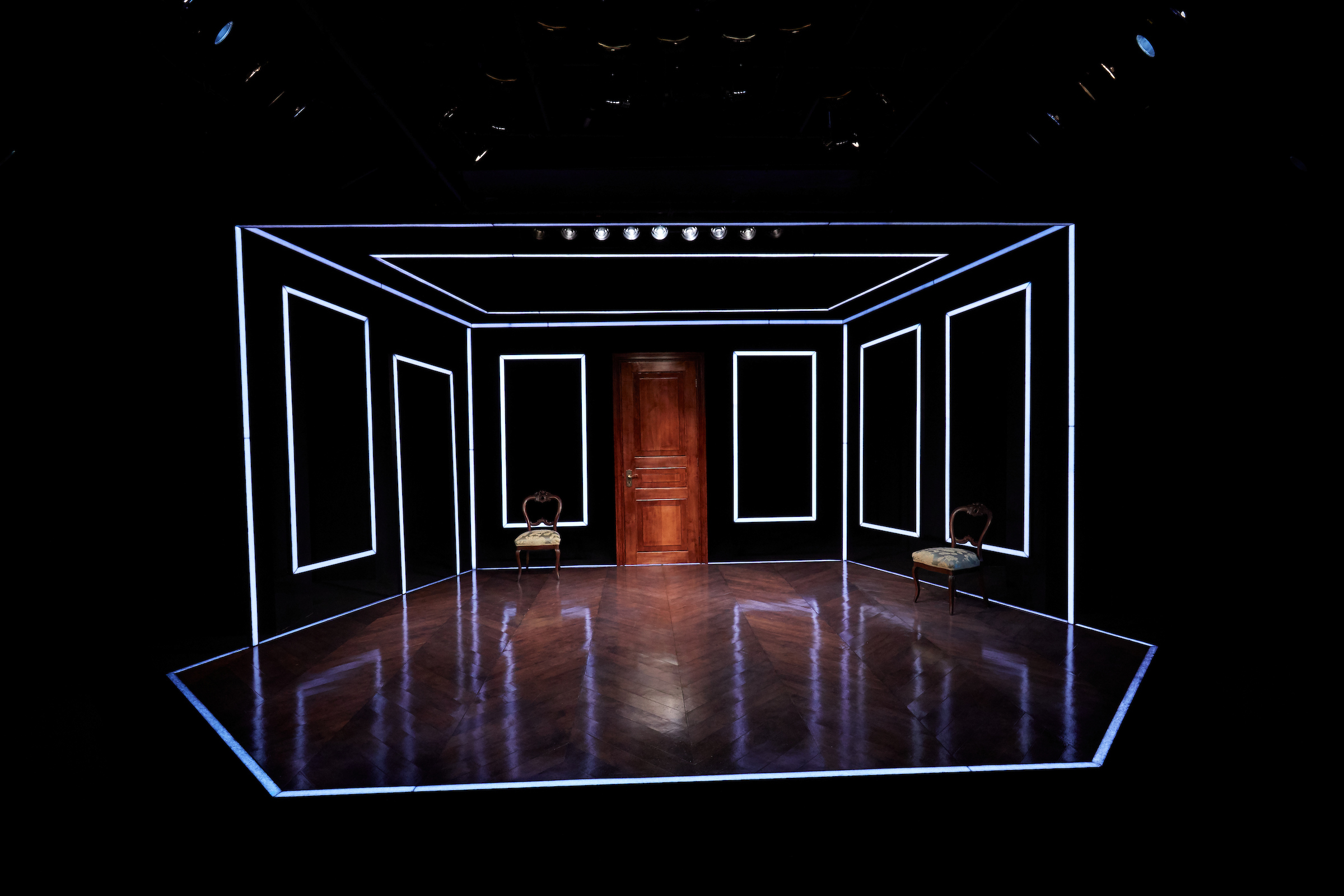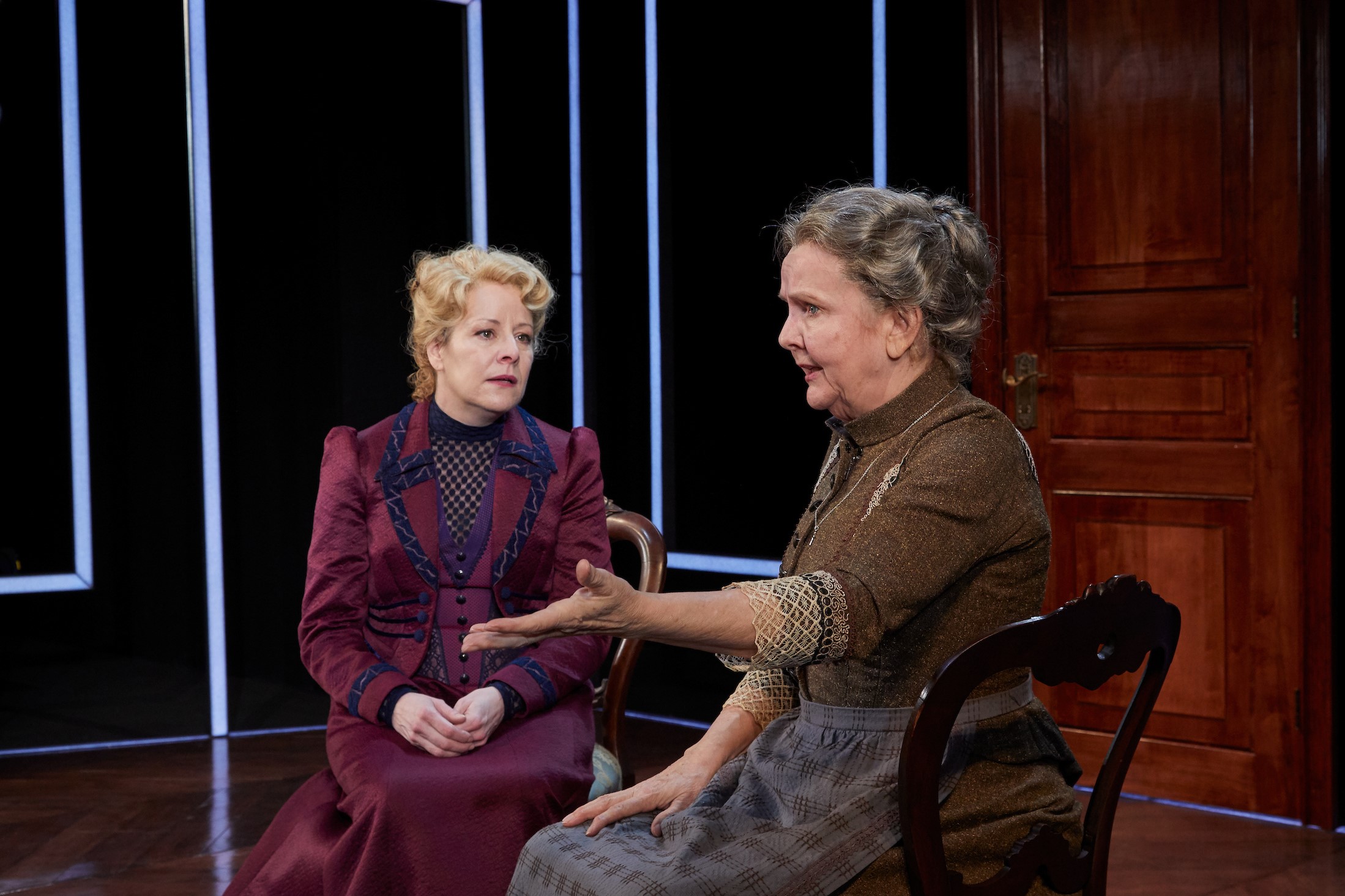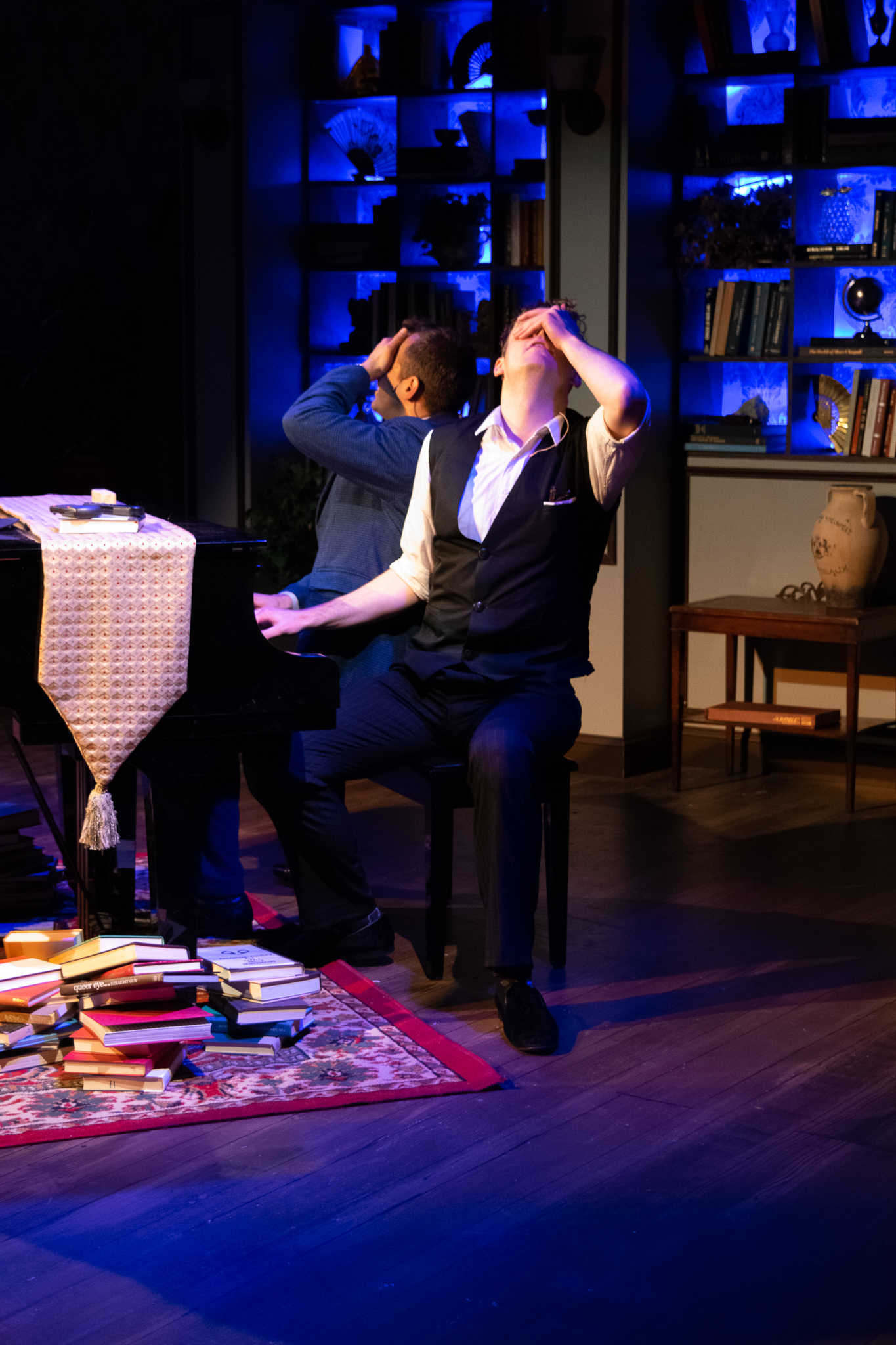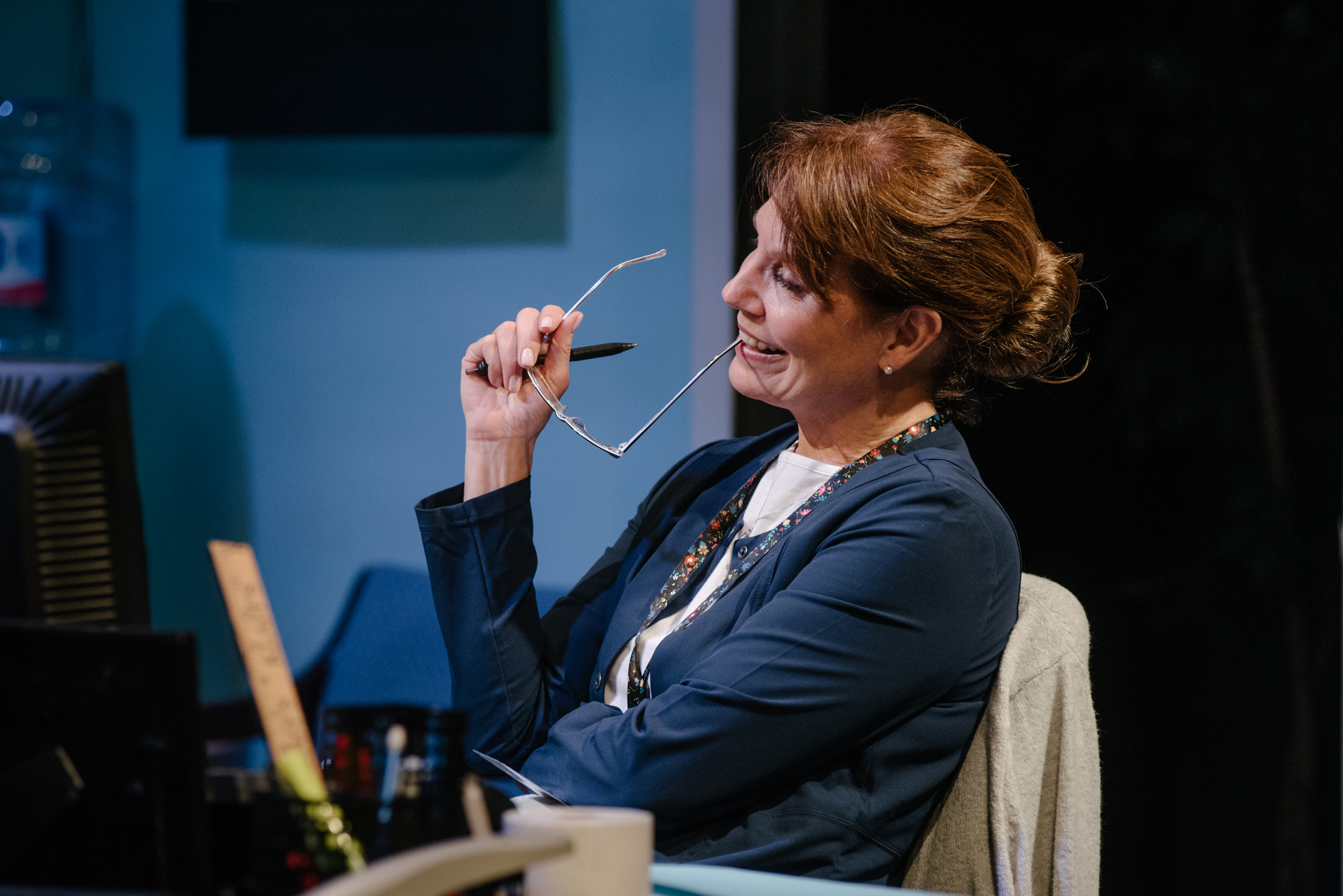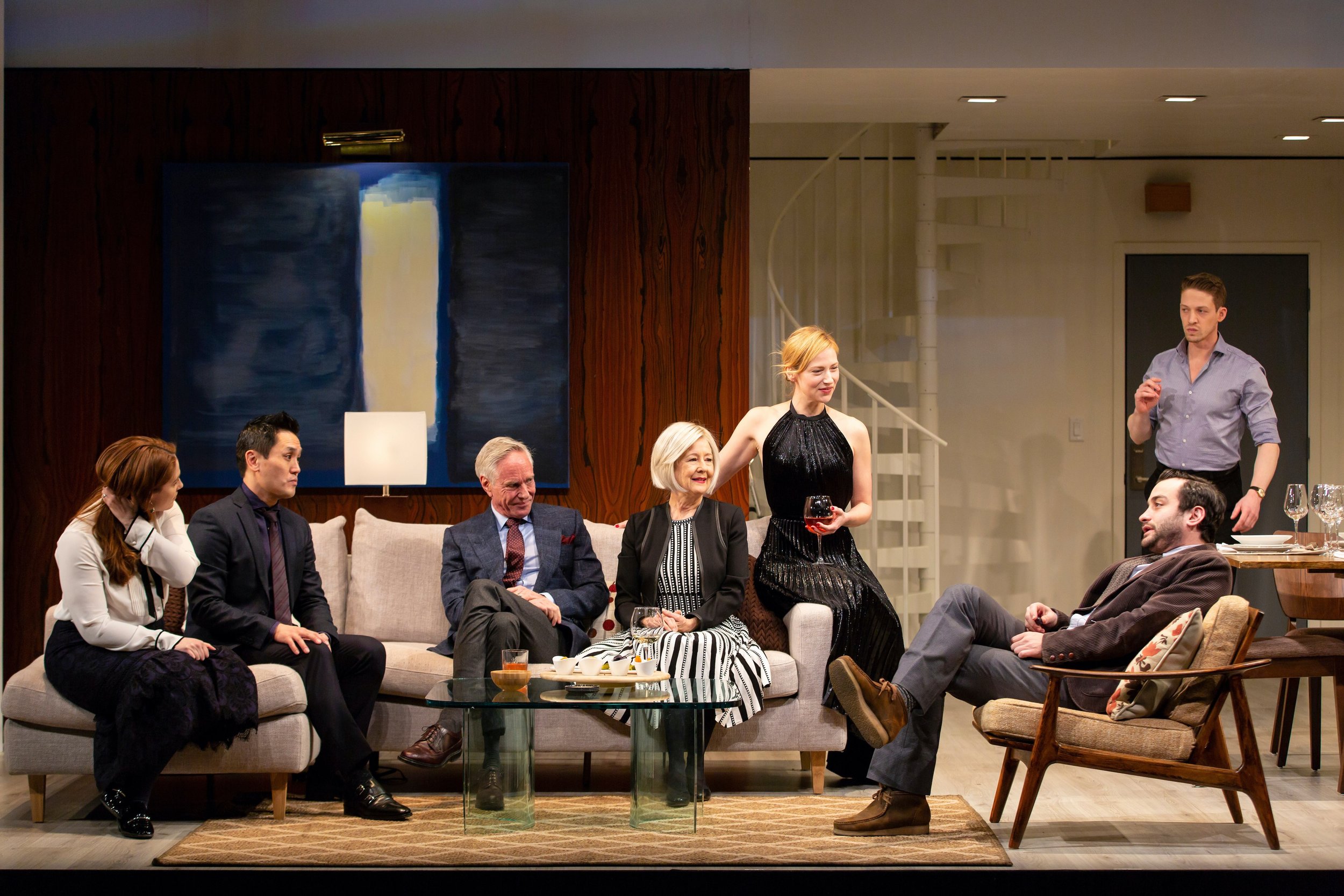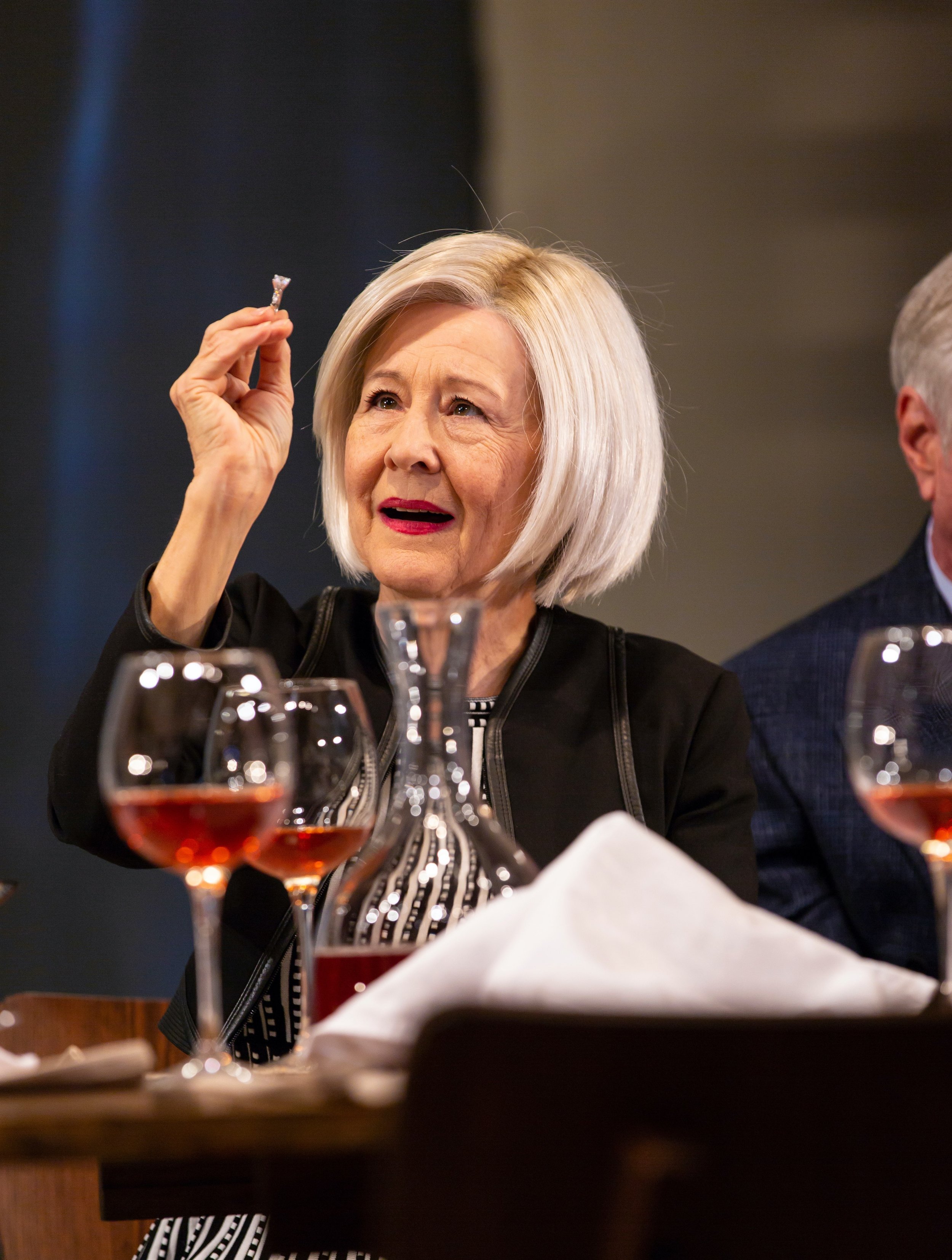Review of Avital, Yale Cabaret
When I got to graduate school in Princeton in 1989, there was a story going around about a gay male faculty member who, after a party for grad students at his home, had aggressively hit on a grad student he had gotten alone. The incident was traumatic for the student and irritating to the faculty member, who got suspended, briefly, I believe. In any case, I didn’t know anyone involved, but it indicated something about graduate studies.
That was ten years after Avital Ronell received her doctorate at Princeton, and she had recently become known for The Telephone Book, a super cool work of cultural criticism heavily laden with post-phenomenological philosophy. Ronell hung with the likes of Jacques Derrida and Hélène Cixous, and Jean-Luc Nancy. The feminist philosopher Judith Butler, one of Ronell’s Berkeley cronies, released her highly influential Gender Trouble shortly after.
The story of the randy faculty member and the legacy of the glories of early ‘90s cultural criticism shared uneasy space in my mind when the story of Ronell’s treatment of a doctoral advisee, Nimrod Reitman, at NYU in the 2000s broke in 2018. Reitman added Ronell to the #MeToo mix when he accused her of sexual harassment and stalking and other actions generally reserved—in the popular consciousness at least—for predatory males in power. Judith Butler earned internet ire for her defense of Ronell, who was tried in various think-pieces, some rather captious. Both Reitman and Ronell identify as gay; all the more reason, one might suppose, for gender trouble and the difficulty of reading how power is inscribed into discourse relations to be relevant to whatever was going on between them.
In Avital, a performance piece by Michael Breslin, a third-year dramaturg at the Yale School of Drama, in collaboration with two actors, Amandla Jahava and Zoe Mann, the relation between Ronell and Reitman—with verbatim quotations from their published email exchanges played for lurid laughs—becomes the stuff of hilarious, irreverent, sad, surprising, creative and, finally, exhausting intervention. Apparently, Ronell began as a performance artist, and certainly her version of philosophical inquiry is highly performative, so this piece at the Yale Cabaret plays where she lives. Two more shows, tonight, at 8 and 11 p.m.
It begins before it begins. The set is an incredibly long conference table, complete with skirt and water carafe and microphone and chair. It’s the setting—if you’re in the academy—of “a talk,” “a presentation,” “a paper.” The three actors come in and mime energetically to a breathy ABBA tune and we’re off.
Michael Breslin in Avital
Breslin takes the lone chair and launches into a frenetic mimicry of Ronell giving a paper on Stupidity (the title of a later book). Breslin’s take-off is hilarious, a caustic injection of the carnivalesque into a domain generally too self-involved to note how ridiculous it can be. The mockery isn’t aimed at Ronell so much as the performativity of academia itself. Breslin, in his own voice, introduces the Ronell/Reitman story with a barrage of quick and funny clips, comedy-show style. I almost fell out of my chair from laughing a few times.
Soon Mann, in a distressed fright-wig and a black negligee, is giving a nicely controlled reading of Ronell’s verbal caresses and salient bon mots. Jahava, way off on the other end of the long table, with a helmet-like hairdo, puts Reitman through his paces. In emails to Ronell he’s rather ham-fisted at trying to play along with her flighty flirtations; in emails to others he vents about her unreasonable and distressing and disgusting demands.
Zoe Mann in Avital
To dramatize these exchanges simply to expose how pathetic they are—or, indeed, how private—would be worth a cheap laugh, doused in Schadenfreude. Breslin has more on his mind, and that’s indicated by how he presents the material. Eventually we get cartoon talking heads of the actors, muttering through their personal takes on the Ronell/Reitman repercussions like any internet savant. Mann takes Ronell’s side, attributing her poor choices to the loneliness of the international academic; Jahava opines that the story’s details are simply “too white.”
Eventually, Jahava enacts a comedy routine that compares the survival skills of black girls and white girls, but before she gets to that, she gives us a heart-to-heart on how she became possessed by the genius of Barbra Streisand, and, while Mann belts out “I’m the Greatest Star,” races back and forth and cavorts with manic glee. By then, we’ve strayed a bit from Ronell’s particular abuse of power, but, at the same time, we’re catching glimpses of certain contextual issues, having to do with representations of gender and with queer aesthetics, and that, for Avital, is all we need.
Amandla Jahava in Avital
Admittedly, some parts do drag a bit—or does it say something about me that watching cartoon faces talk tends to make me doze? But the musical numbers, including a rave up at the end, complete with mirror ball, bring in a devilish sense of the party ethic that plays into the human tendency to make other bodies do one’s bidding. At one point, Breslin, with Reitman wig, and Mann, as Ronell, lie upon each other as though in fulfillment of Ronell’s favorite bubble bath fantasy.
Michael Breslin and Zoe Mann in Avital
Then there’s Breslin’s live typing of what might be a series of emails or private logs (happening publicly); these, in the self-consciously arch voice of text-message-confession, tell a story of date rape the most harrowing fact of which may have been the perpetrator’s “rainbow faux hawk.” Does the shade thrown return to plague the inventor, we might wonder, but the magic of performance is how well it exorcises demons while exercising those nimble skeletons in the closet.
What, we might ask, has Ronell been outed as, at last? And, whatever that is, would anyone ever hashtag it MeToo?
Zoe Mann and Michael Breslin in Avital
Avital
By Michael Breslin and the company
Directed by Michael Breslin
Dramaturg: Ariel Sibert; Producers: Lisa D. Richardson & Sophie Siegel-Warren; Scenic Designer: Stephanie Osin Cohen; Costume Designer: David Mitsch; Projection Designers: Erin Sullivan & Matthias Neckermann; Sound Designers: Daniela Hart & Liam Bellman-Sharpe; Lighting Designer: Ryan Seffinger; Technical Director: Dashiell Menard; Stage Manager: Julia Bates; Swing Stage Manager: Rory Pelsue
Cast: Michael Breslin, Amandla Jahava, Zoe Mann
Yale Cabaret
March 7-9, 2019


